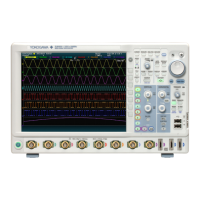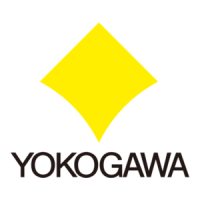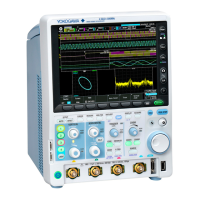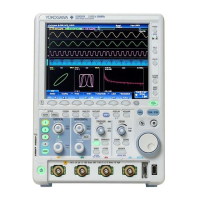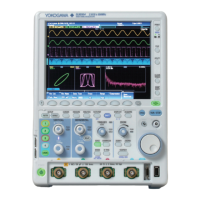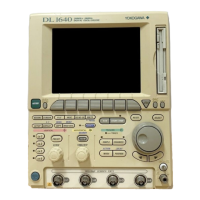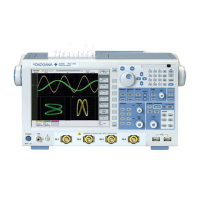5-89
IM DLM4038-17EN
Commands
5
:CURSor[:TY]:DEGRee:UNIT
Function Sets or queries the unit of angle cursor
measurement.
Syntax
:CURSor[:TY]:DEGRee:UNIT {<String>}
:CURSor[:TY]:DEGRee:UNIT?
<String> = Up to four characters
Example
:CURSOR:TY:DEGREE:UNIT "DEG"
:CURSOR:TY:DEGREE:UNIT?
-> :CURSOR:TY:DEGREE:UNIT "DEG"
:CURSor[:TY]:DEGRee:V<x>?
Function Queries all angle cursor voltage settings.
Syntax
:CURSor[:TY]:DEGRee:V<x>?
<x> = 1 to 2
:CURSor[:TY]:DEGRee:V<x>:STATe
Function Sets or queries the on/off status of an angle
cursor voltage.
Syntax
:CURSor[:TY]:DEGRee:V<x>:STATe {<Boo
lean>}
:CURSor[:TY]:DEGRee:V<x>:STATe?
<x> = 1 to 2
Example
:CURSOR:TY:DEGREE:V1:STATE ON
:CURSOR:TY:DEGREE:V1:STATE?
-> :CURSOR:TY:DEGREE:V1:STATE 1
:CURSor[:TY]:DEGRee:V<x>:VALue?
Function Queries the vertical value of the angle cursor.
Syntax
:CURSor[:TY]:DEGRee:V<x>:VALue? [BUS
]
<x> = 1 to 2
Example
:CURSOR:TY:DEGREE:V1:VALUE?
-> :CURSOR:TY:DEGREE:V1:VALUE 10.000
000E−03
Description • You can specify BUS when
:LOGic:PODL:MODE is set to ON and
:CURSor[:TY]:DEGRee:TRACe
is set to 8.
An error will occur if you specify BUS when the
above settings have not been made.
If BUS is not specified, the cursor
values are output according to the
:LOGic:PODL:BITOrder
and
:LOGic:PODL:BIT<x>:DISPlay
settings.
If BUS is specified, the cursor
values are output according to the
:LOGic:PODL:BUS:ASSignment
setting.
•
:CURSor[:TY]:DEGRee:TRACe
is set to
ALL, cursor values are output in the following
order:channel 1 to channel 7, channel 8 or
the logic bus, logic input waveform, computed
waveform 1 to 4.
• If
:LOGic:PODL:BUS:DISPlay
is set to OFF,
the cursor value will be “NAN” (Not A Number).
:CURSor[:TY]:DEGRee:POSition<x>
Function Sets or queries the position of an angle cursor.
Syntax
:CURSor[:TY]:DEGRee:POSition<x> {<NR
f>}
:CURSor[:TY]:DEGRee:POSition<x>?
<x> = 1 to 2
<NRf> = −5 to 5 (in steps of 10 divisions/display
record length)“
Example
:CURSOR:TY:DEGREE:POSITION1 2
:CURSOR:TY:DEGREE:POSITION1?
-> :CURSOR:TY:DEGREE:POSITION1 2.000
0000
:CURSor[:TY]:DEGRee:REFerence<x>
Function Sets or queries the position of the angle reference
start point (Reference1) or the angle reference
end point (Reference2).
Syntax
:CURSor[:TY]:DEGRee:REFerence
<x> {<NRf>}
:CURSor[:TY]:DEGRee:REFerence<x>?
<x> = 1 to 2
<NRf> = −5 to 5 (in steps of 10 divisions/display
record length)
Example
:CURSOR:TY:DEGREE:REFERENCE1−1
:CURSOR:TY:DEGREE:REFERENCE1?
-> :CURSOR:TY:DEGREE:
REFERENCE1−1.0000000
:CURSor[:TY]:DEGRee:RVALue
Function Sets or queries the reference angle.
Syntax
:CURSor[:TY]:DEGRee:RVALue {<NRf>}
:CURSor[:TY]:DEGRee:RVALue?
<NRf> = 1 to 720
Example
:CURSOR:TY:DEGREE:RVALUE 180
:CURSOR:TY:DEGREE:RVALUE?
-> :CURSOR:TY:DEGREE:RVALUE 180
:CURSor[:TY]:DEGRee:TRACe
Function Sets or queries the source waveform that you
want to measure using the angle cursors.
Syntax
:CURSor[:TY]:DEGRee:TRACe {<NRf>|
ALL|MATH<x>}
:CURSor[:TY]:DEGRee:TRACe?
<NRf> = 1 to 8
<x> = 1 to 4
Example
:CURSOR:TY:DEGREE:TRACE 1
:CURSOR:TY:DEGREE:TRACE?
-> :CURSOR:TY:DEGREE:TRACE 1
5.10 CURSor Group
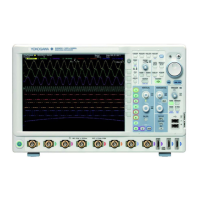
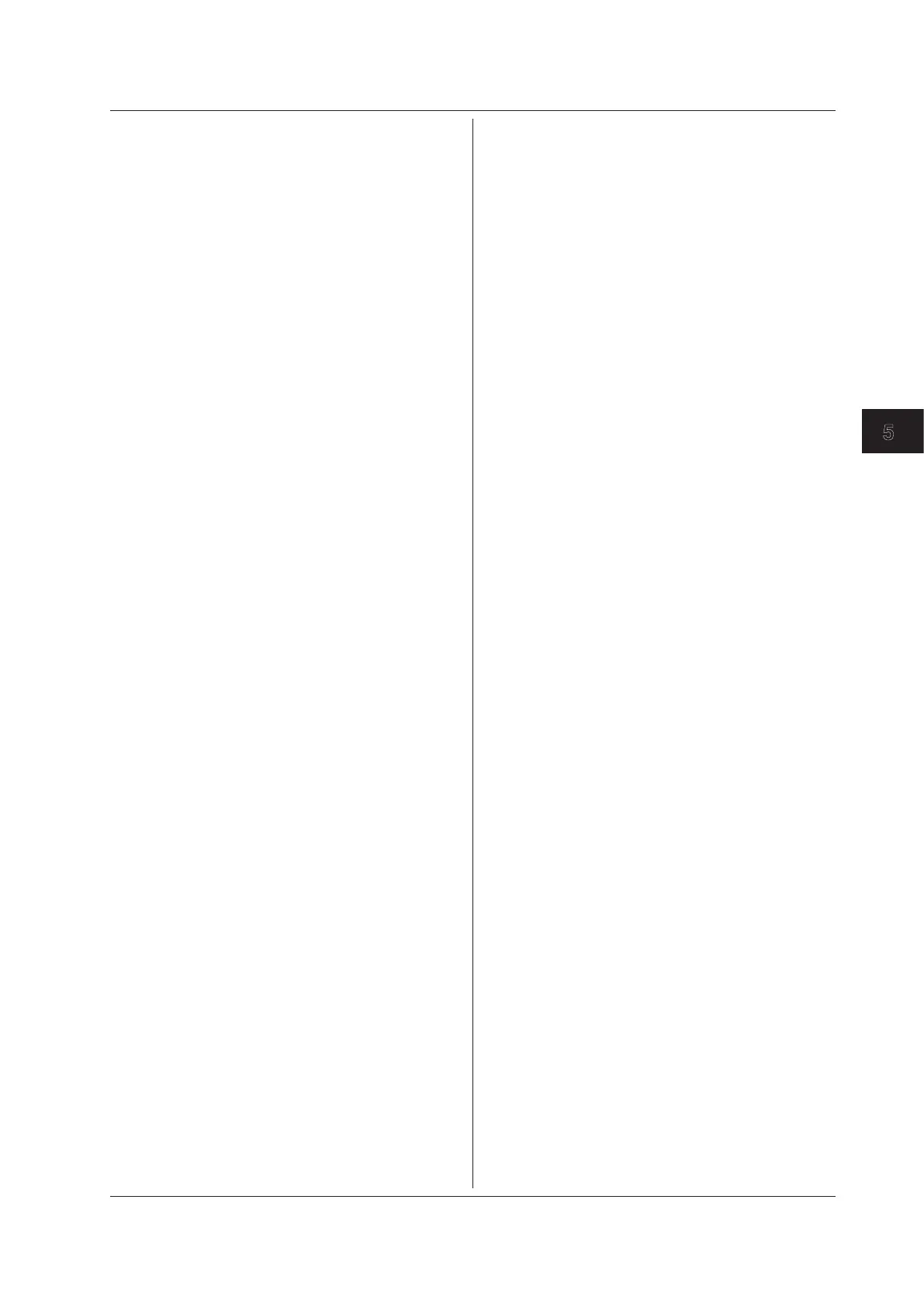